
This is a adding and subtracting polynomials assignment that includes an answer key and a QR code for students to check their own work.
- Subject:
- Algebra
- Math 1
- Material Type:
- Homework/Assignment
- Author:
- KORI ELLIOTT
- Date Added:
- 06/01/2020

This is a adding and subtracting polynomials assignment that includes an answer key and a QR code for students to check their own work.

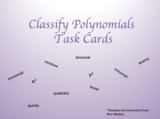
Eight task cards that are self-checking on classifying polynomials.

Students see how well they understand function expressions by trying to match the function graph to a generated graph. They may choose from several function types or select random and let the computer choose.

Students explore this interactive math tool and try to figure out what's happening on their own to discover the value of (a + b)^2?
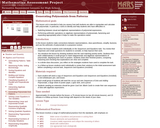
This lesson unit is intended to help you assess how well students are able to manipulate and calculate with polynomials. In particular, it aims to identify and help students who have difficulties in: switching between visual and algebraic representations of polynomial expressions; and performing arithmetic operations on algebraic representations of polynomials, factorizing and expanding appropriately when it helps to make the operations easier.

This general math site offers reference material on a host of math topics, plus a math message board and links to relevant material online. The tables cover a range of math skills, from basic fraction-decimal conversion to the more advanced calculus and discrete math. The information is presented in notation form, with diagrams, graphs, and tables. The site is available in English, Spanish, and French. This resource is part of the Teaching Quantitative Skills in the Geosciences collection. http://serc.carleton.edu/quantskills/

Adapted from mathematicsvisionproject.com’s Material Overview:
The Mathematics Vision Project (MVP) was created as a resource for teachers to implement the Common Core State Standards (CCSS) using a task-based approach that leads to skill and efficiency in mathematics by first developing understanding. The MVP approach develops the Standards of Mathematical Practice through experiential learning. Students engage in mathematical problem solving, guided by skilled teachers, in order to achieve mathematical proficiency: conceptual understanding, procedural fluency, strategic competence, adaptive reasoning, and productive disposition. The MVP authors created a curriculum where students do not learn solely by either “internalizing what a teacher or book says or, on the other hand, solely by inventing mathematics on their own.”
The MVP classroom experience begins by confronting students with an engaging problem and allows them to grapple with solving it. As students’ ideas emerge, take form, and are shared, the teacher deliberately orchestrates the student discussions and explorations toward a focused math goal. Students justify their own thinking while clarifying, describing, comparing, and questioning the thinking of others leading to refined thinking and mathematical fluency. What begin as ideas become concepts that lead to formal, traditional math definitions and properties. Strategies become algorithms that lead to procedures supporting efficiency and consistency. Representations become tools of communication which are formalized as mathematical models. Students learn by doing mathematics.
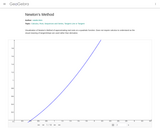
A visual demo of Newton's Method for pre-calculus students.
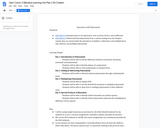
Learning what polynomials are, how to add, subtract and multiply them.
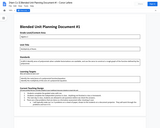
This lesson looks at how to determine the multiplicity of a zero/root of a polynomial function.

This is designed to be used as an assessment at the end of a unit on Polynomials. Studets are given requirements for the project but have the choice of using PowerPoint, Google Slides, Flipgrid, etc to represent their work.This was originally designed by Reed Bowman, Autumn Patterson, and Kori Elliott

This is designed to be used as an assessment at the end of a unit on Polynomials. Studets are given requirements for the project but have the choice of using PowerPoint, Google Slides, Flipgrid, etc to represent their work.This was originally designed by Reed Bowman, Autumn Patterson, and Kori Elliott
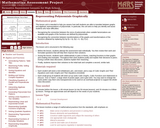
This lesson unit is intended to help teachers assess how well students are able to translate between graphs and algebraic representations of polynomials. In particular, this unit aims to help you identify and assist students who have difficulties in: recognizing the connection between the zeros of polynomials when suitable factorizations are available, and graphs of the functions defined by polynomials; and recognizing the connection between transformations of the graphs and transformations of the functions obtained by replacing f(x) by f(x + k), f(x) + k, -f(x), f(-x).

This lesson will teach students to factor trinomial expressions of the form x^2 + bx + c. Students will use algebra tiles to identify the binomial factors and the graphing calculator to verify the result. In addition, students will identify the x-intercepts and y-intercepts of each trinomial function and explore relationships between the trinomial x^2 + bx + c and its factored form (x + m)(x + n).